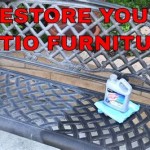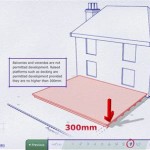How To Remove Moss From Patio Stones
Moss, while possessing a certain aesthetic appeal in some contexts, can become a nuisance on patio stones. Its presence creates a slippery surface, posing a safety hazard and detracting from the overall appearance of the patio. Fortunately, several effective methods exist for removing moss, ranging from simple manual techniques to the application of specialized cleaning solutions.
Manual Removal: Brushing and Scraping
One of the most straightforward methods for moss removal involves physically dislodging it from the patio stones. A stiff-bristled brush, such as a push broom or deck brush, can effectively remove loose moss and debris. For more stubborn moss, a scraper or putty knife can be utilized. Applying firm pressure, scrape the tool along the surface of the stone to lift the moss. This method is particularly well-suited for smaller patios or areas with light moss growth.
When employing manual removal techniques, it's important to consider the hardness of the patio stones. Softer stones may be susceptible to scratching, so it's advisable to test the scraping tool in an inconspicuous area first. Furthermore, proper disposal of the removed moss is essential to prevent its regrowth. Collect the moss and dispose of it in yard waste bags or a compost bin.
Chemical Removal: Utilizing Moss Killers
For more extensive moss infestations or situations where manual removal proves insufficient, chemical moss killers offer a potent solution. These products typically contain ferrous sulfate or other compounds that effectively eliminate moss and prevent its return. When using chemical moss killers, it's crucial to carefully follow the manufacturer's instructions. This includes wearing appropriate protective gear, such as gloves and eye protection, and ensuring adequate ventilation.
Application methods vary depending on the specific product. Some moss killers are available as ready-to-use sprays, while others require dilution with water. Thoroughly saturate the affected areas, ensuring even coverage. After application, the moss will typically turn brown or black within a few hours or days, indicating its demise. Once the moss has died, it can be swept or rinsed away with a garden hose.
It's important to note that some chemical moss killers may also affect surrounding vegetation. Exercise caution when applying these products near flowerbeds or other desirable plants. Consider using a barrier, such as cardboard or plastic sheeting, to protect vulnerable plants from overspray or runoff.
Natural Removal: Utilizing Eco-Friendly Solutions
For those seeking a more environmentally friendly approach, several natural methods can effectively remove moss from patio stones. One such method involves using a solution of baking soda and water. Mix one tablespoon of baking soda per gallon of water and spray the solution onto the moss. Allow the solution to dwell for several hours or overnight before scrubbing the moss with a brush and rinsing thoroughly.
Another natural option involves using white vinegar. Fill a spray bottle with undiluted white vinegar and apply it directly to the moss. Similar to the baking soda solution, allow the vinegar to sit for several hours before scrubbing and rinsing. While vinegar is generally safe for use on most patio stones, it's advisable to test it in an inconspicuous area first to ensure compatibility.
Boiling water can also be an effective method for killing moss. Carefully pour boiling water directly onto the moss, being mindful of potential splashing. This method is best suited for smaller areas and should be used with caution. Using boiling water is not effective at removing moss from the root as it only burns the top growth. The moss will eventually re-establish itself on the surface if the correct conditions for growth exist.
Preventing Moss Regrowth: Maintaining a Moss-Free Patio
After removing moss, implementing preventative measures can help maintain a moss-free patio. Regular sweeping or brushing removes debris and prevents moss spores from taking hold. Trimming overhanging branches allows more sunlight to reach the patio, creating a less hospitable environment for moss growth. Improving drainage can also help prevent moss, as moss thrives in damp, shady conditions.
Consider applying a sealant to the patio stones after cleaning. Sealants create a protective barrier that inhibits moss growth and makes future cleaning easier. Choose a sealant specifically designed for patio stones and follow the manufacturer's instructions for application.
Regularly inspect the patio for signs of moss regrowth. Addressing moss in its early stages prevents it from becoming a larger problem. By incorporating these preventative measures into routine patio maintenance, one can effectively minimize the recurrence of moss and enjoy a clean, safe, and attractive outdoor space.

How To Kill And Prevent Sidewalk Patio Moss

How To Remove Moss From Pavers Paver Installation San Diego

Remove Algae And Lichen Off Patio Pavers Like Rick Wet Forget Blog

How To Remove Moss Between Patio Stones

See Jane Drill How To Remove Moss From Concrete And Brick Patios

How To Get Rid Of Moss Landscapers Share 42p Remove Paving Express Co

How To Remove Moss From Concrete 6 Ways It

How To Remove Moss From Paving And Concrete Without A Pressure Washer Or Scrubbing Express Co

How To Get Rid Of Moss

Best Tips On Cleaning Patio Slabs How To Get Rid Of Algae
See Also








